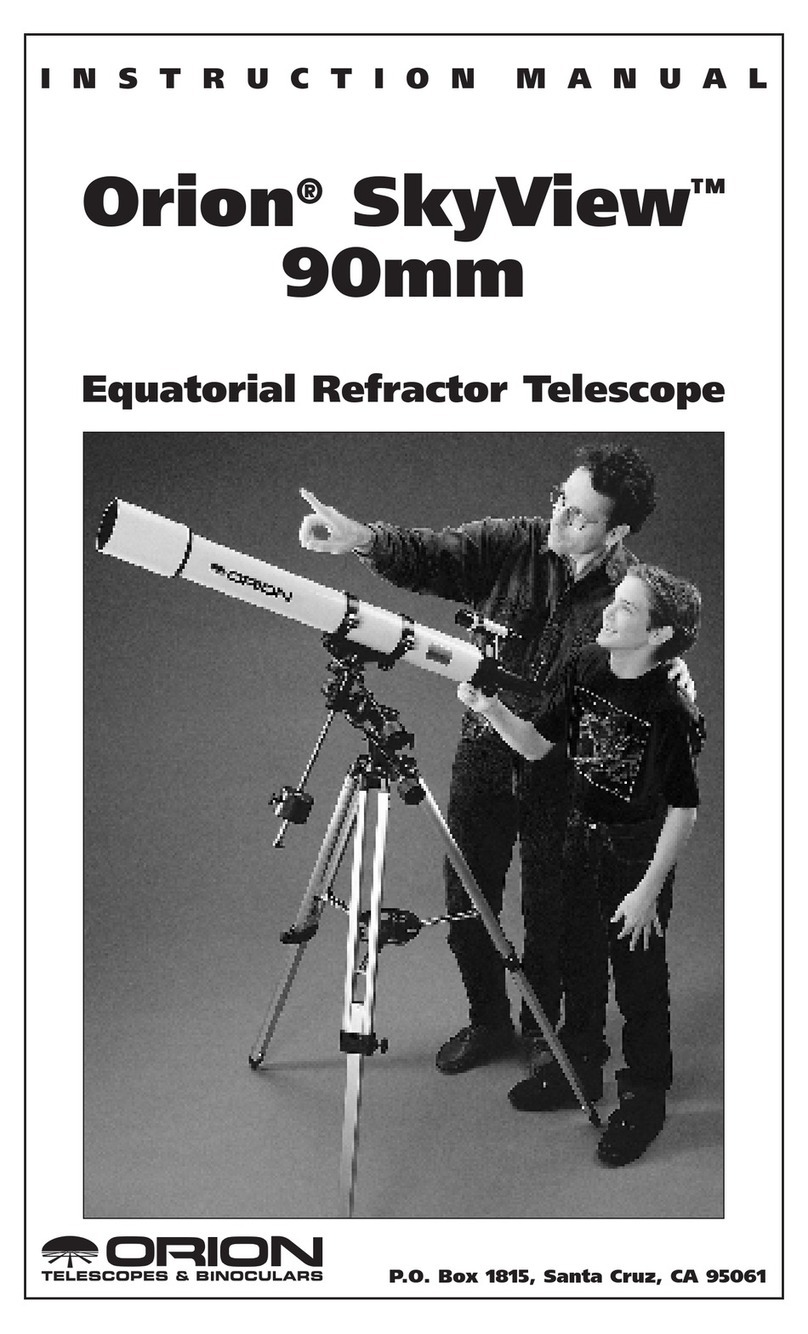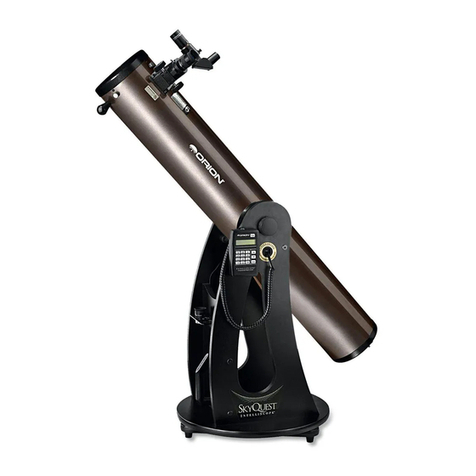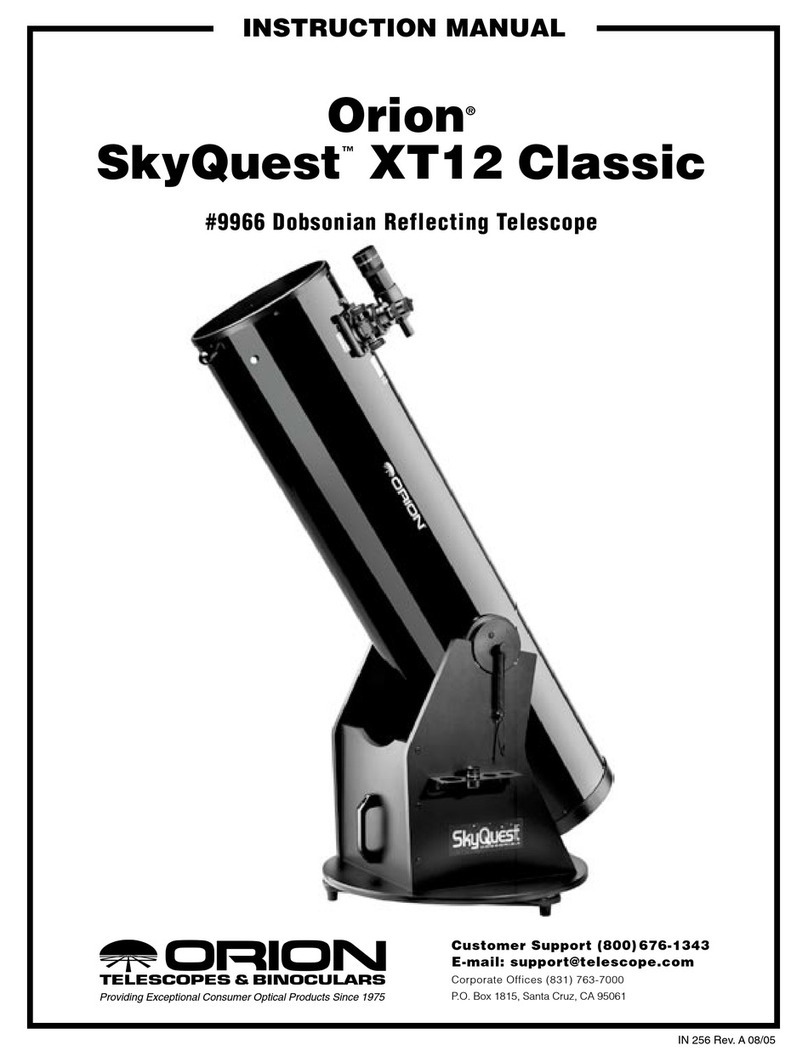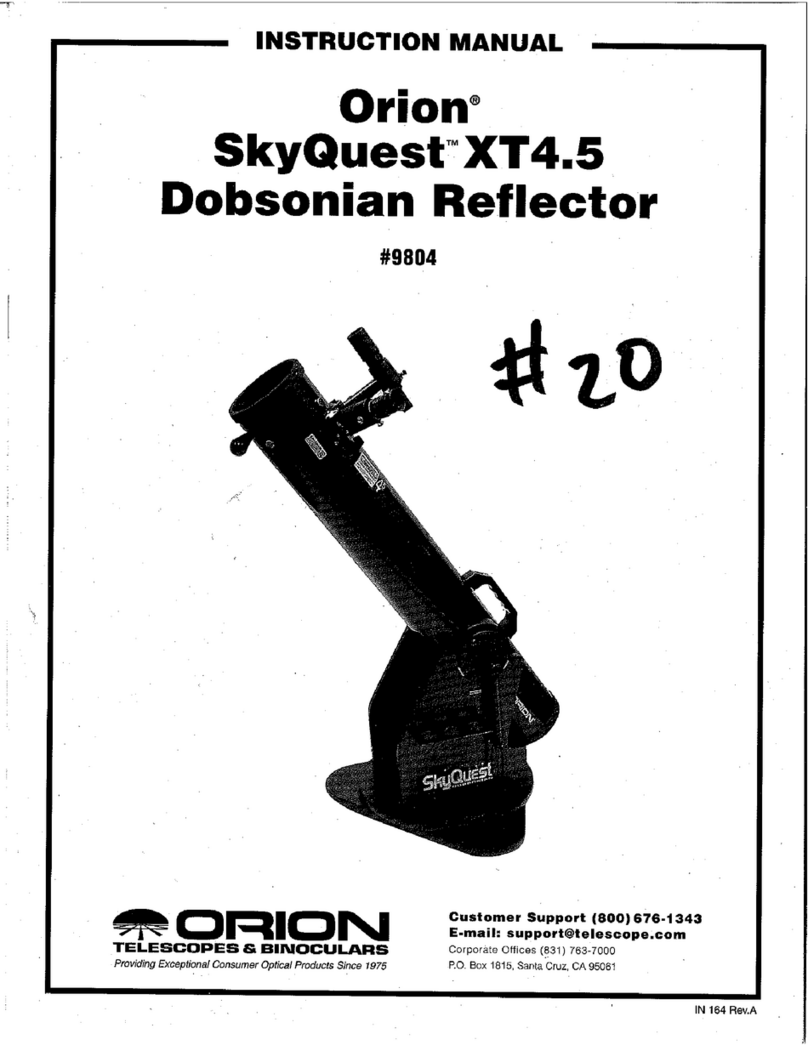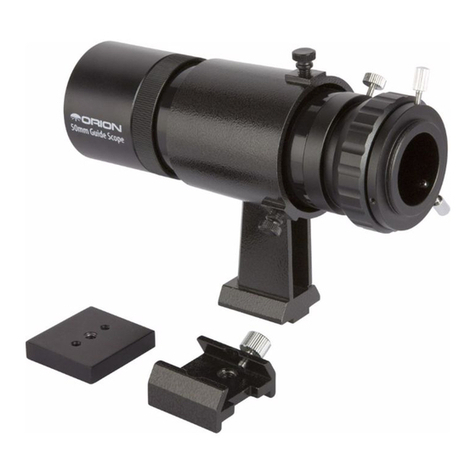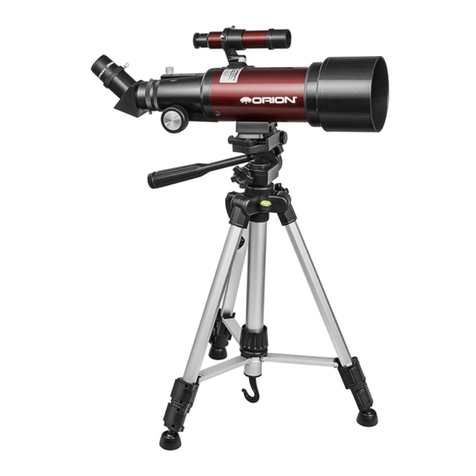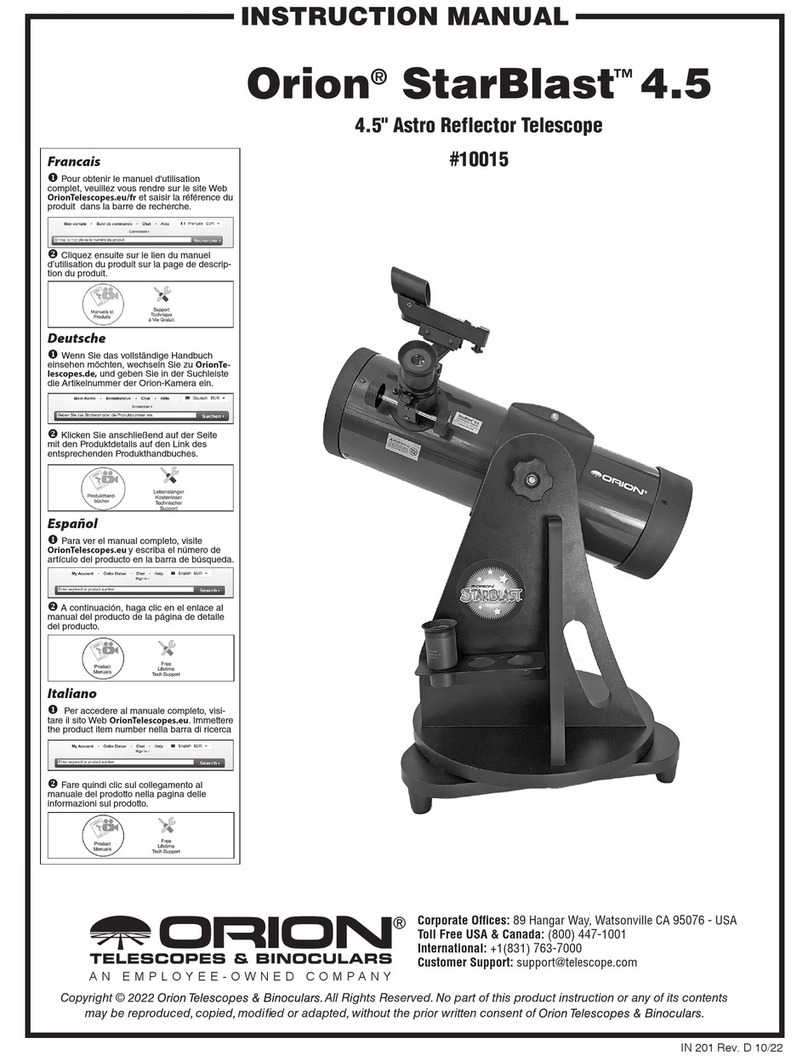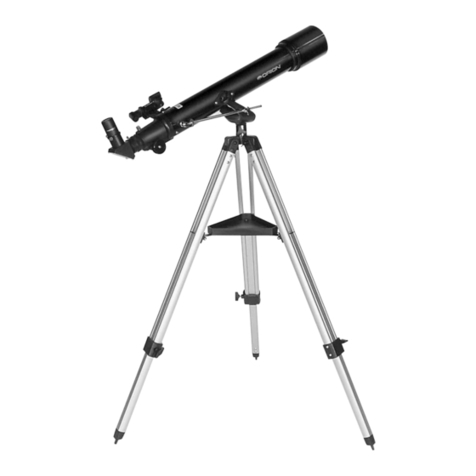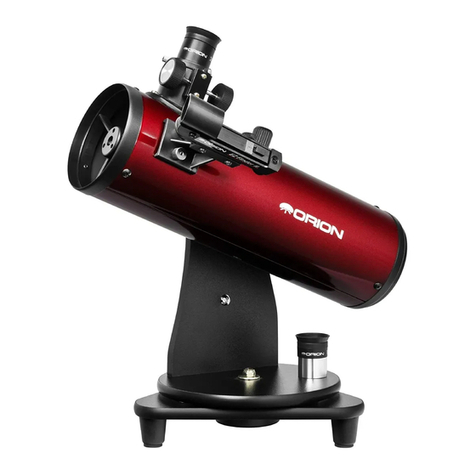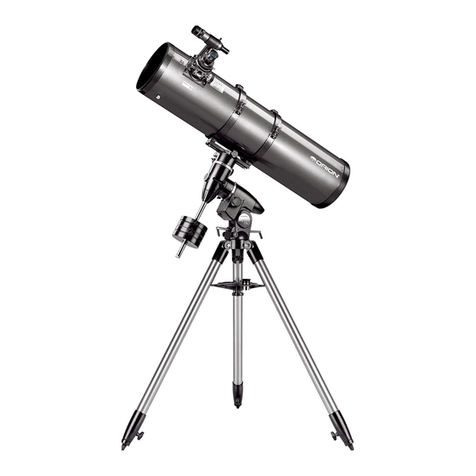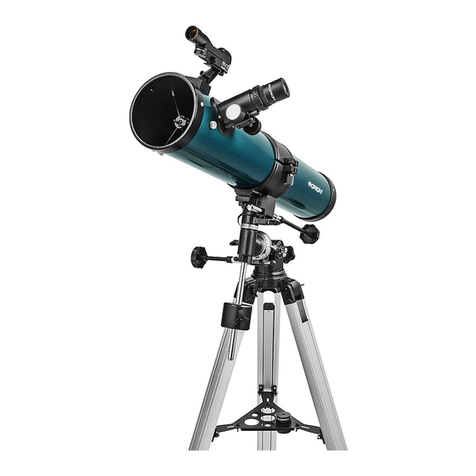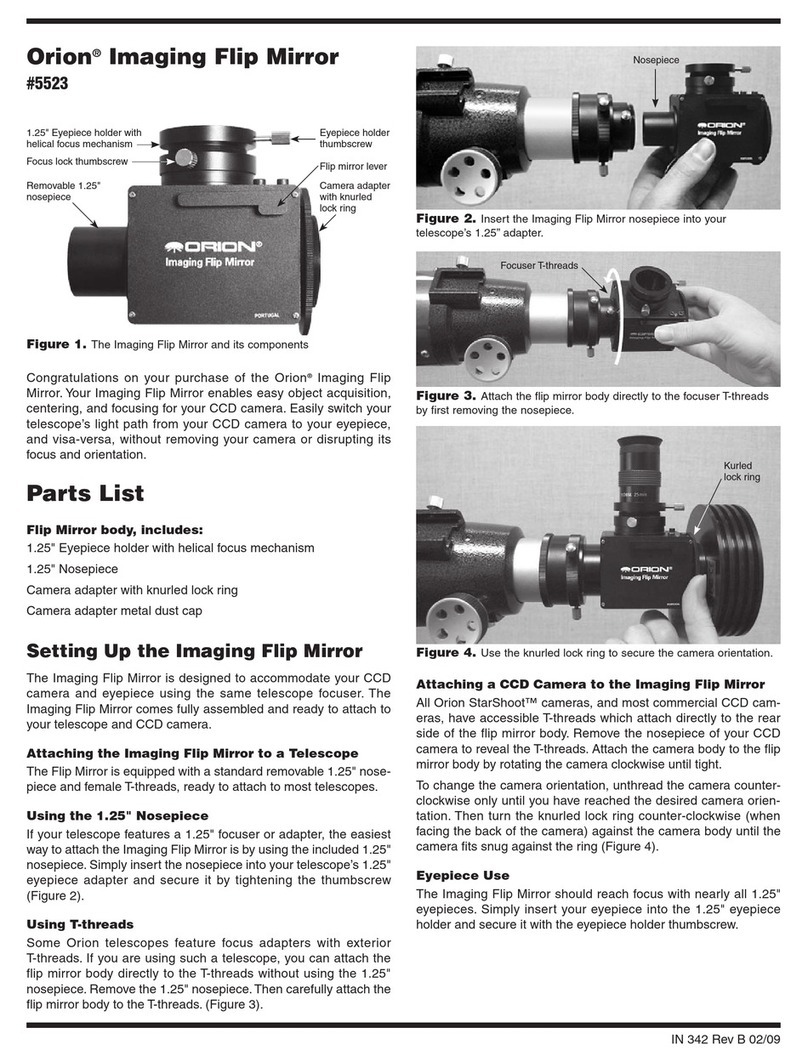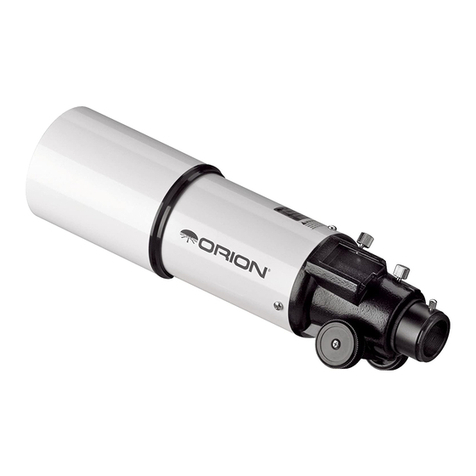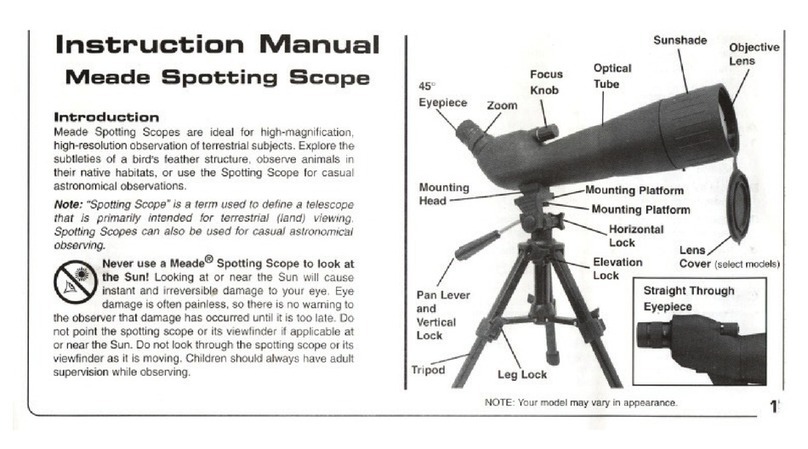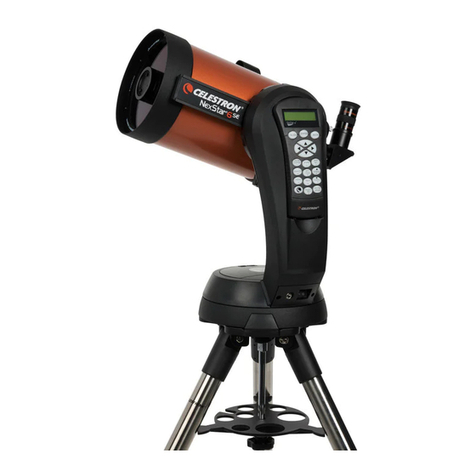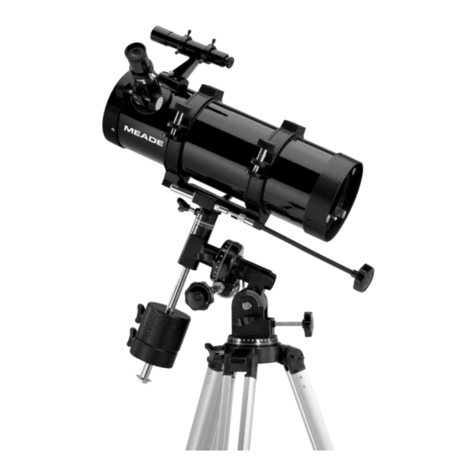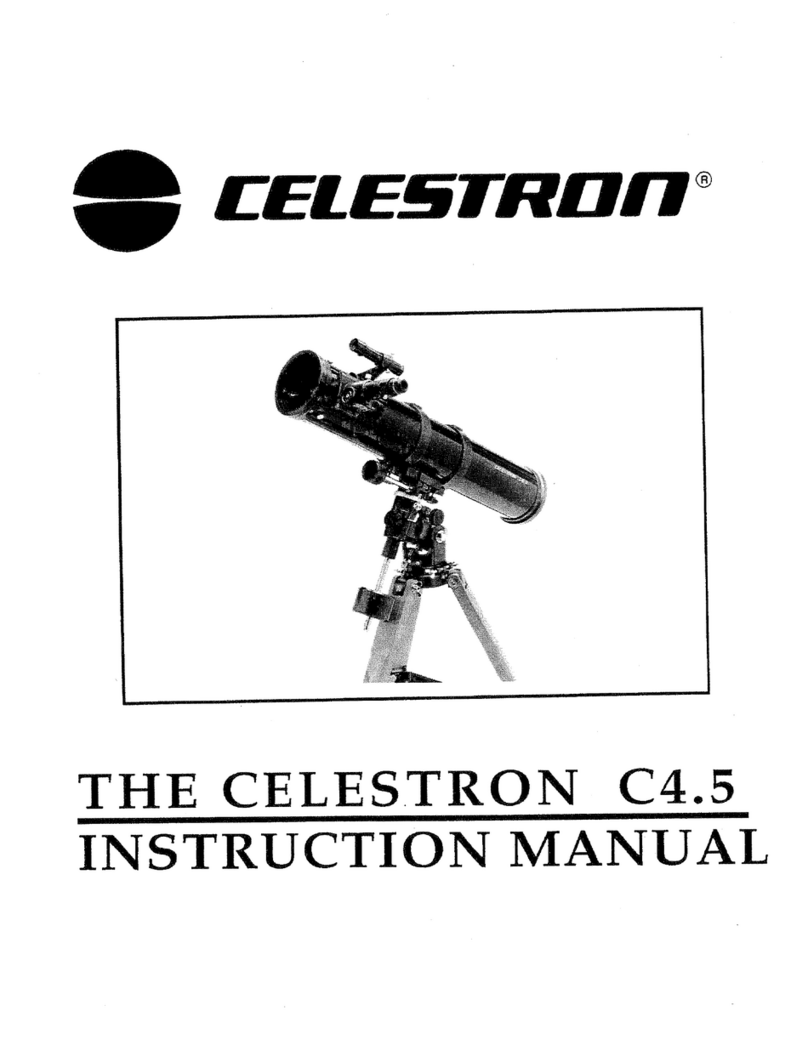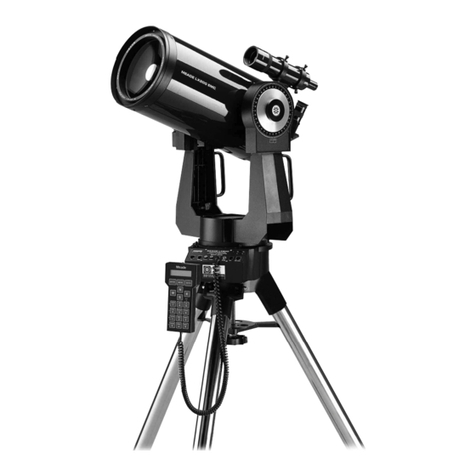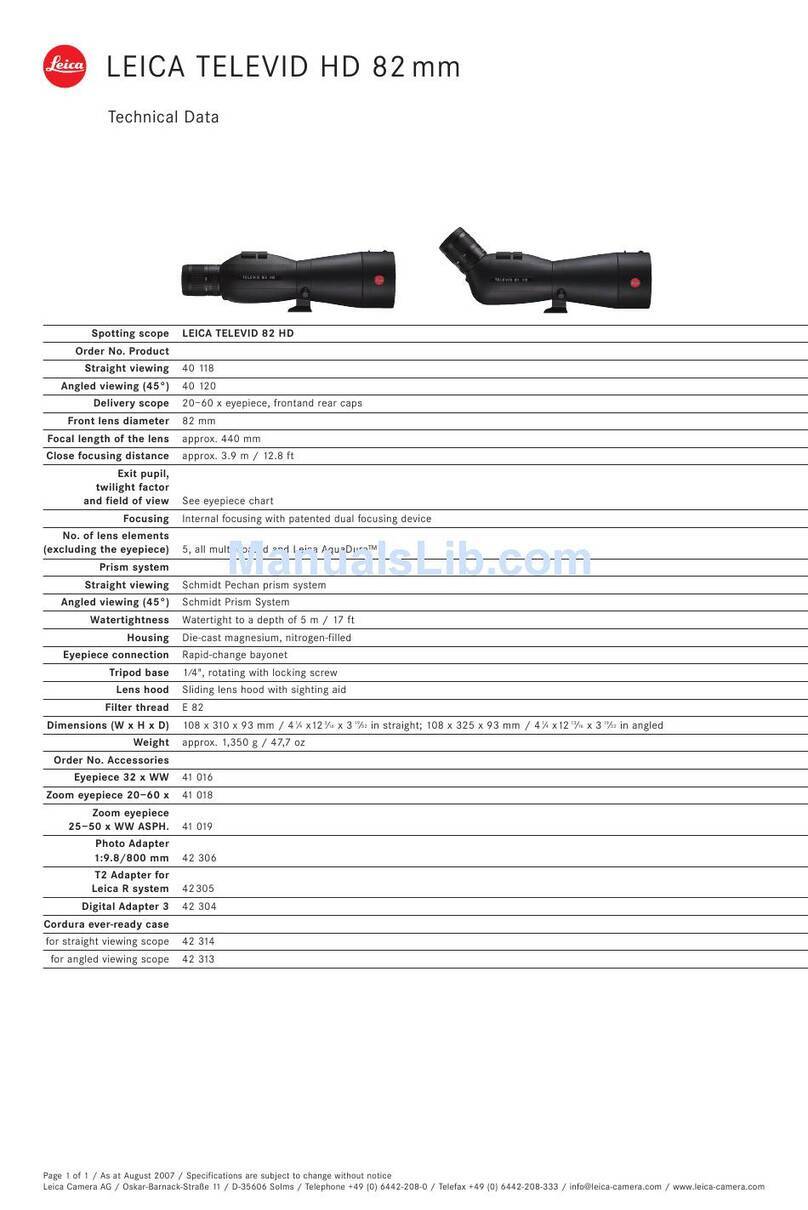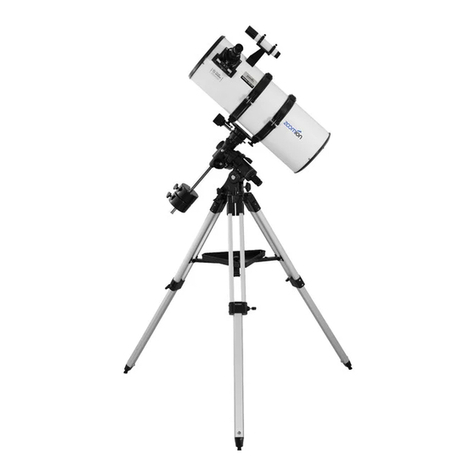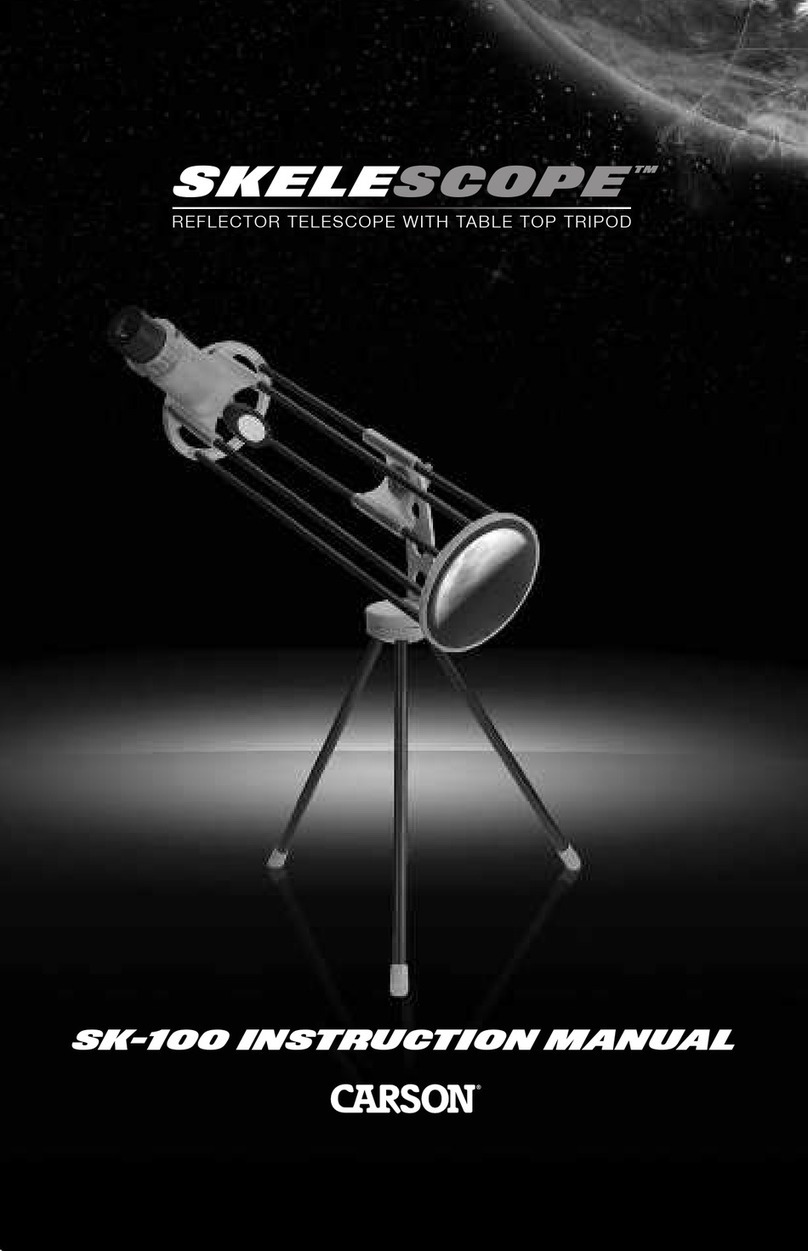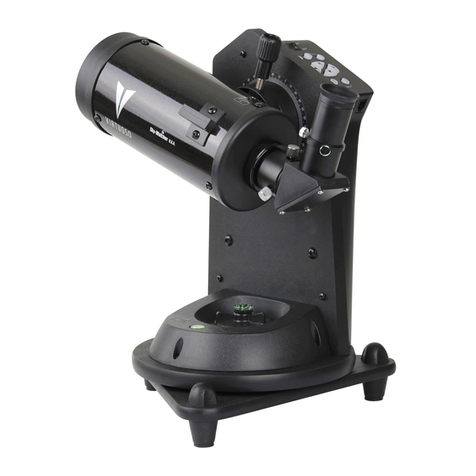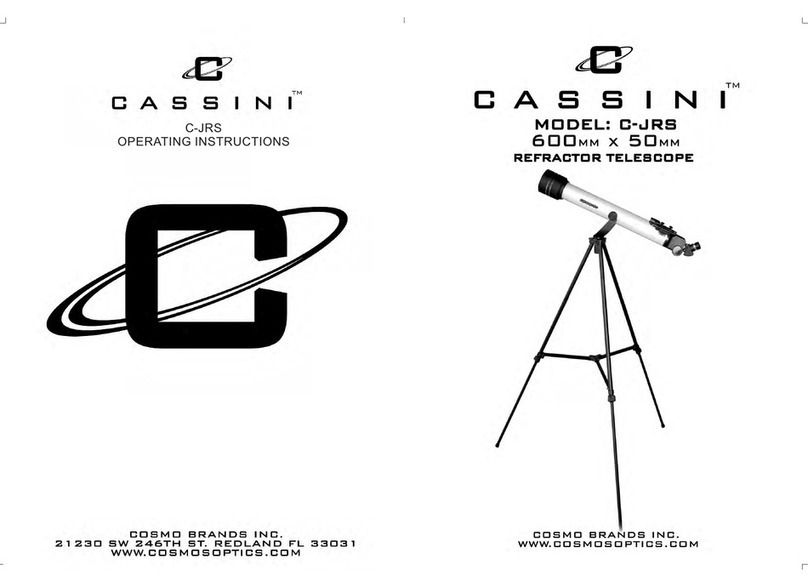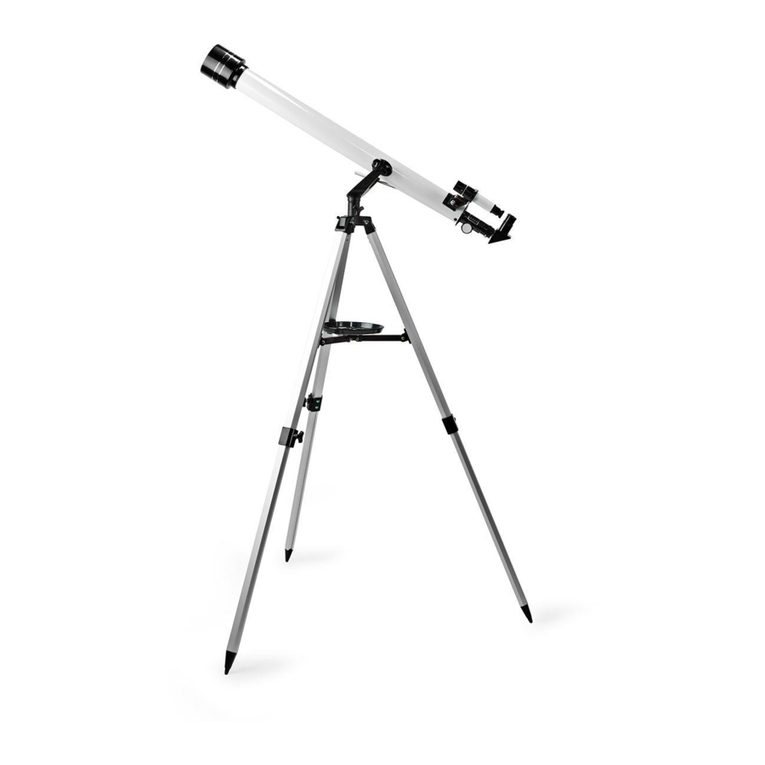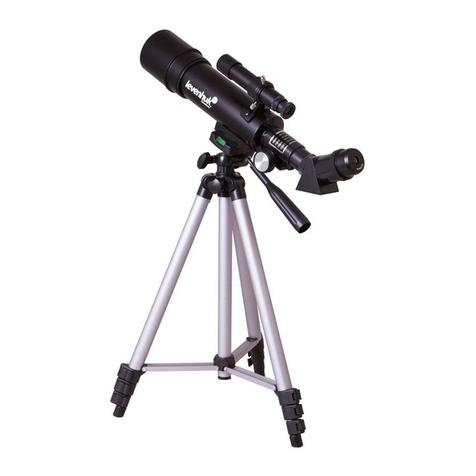3
Table of Contents
1. Parts List . . . . . . . . . . . . . . . . . . . . . . . . . 3
2. Assembly . . . . . . . . . . . . . . . . . . . . . . . . . 3
3. Balancing the Telescope . . . . . . . . . . . . . 5
4. Aligning the Finder Scope . . . . . . . . . . . . 6
5. Setting Up and Using the
Equatorial Mount . . . . . . . . . . . . . . . . . . . 6
6. Using Your Telescope—
Astronomical Observing . . . . . . . . . . . . . 10
7. Astrophotography . . . . . . . . . . . . . . . . . . 13
8. Terrestrial Viewing . . . . . . . . . . . . . . . . . 14
9. Care and Maintenance . . . . . . . . . . . . . . 14
10. Specifications . . . . . . . . . . . . . . . . . . . . 14
1. Parts List
Qty. Description
1 Optical tube assembly
1 German-type equatorial mount
2 Slow-motion control cables
1 Counterweight
1 Counterweight shaft
3 Tripod legs
1 Accessory tray with mounting hardware
1 Accessory tray bracket
2 Optical tube mounting rings (located on optical tube)
1 6x30 achromatic crosshair finder scope
1 Finder scope bracket with O-ring
1 Mirror star diagonal (1.25")
1 25mm (36x) Sirius Plössl eyepiece (1.25")
1 10mm (91x) Sirius Plössl eyepiece (1.25")
1 Objective lens dust cap
4 Assembly Tools (2 wrenches, Phillips-head
screwdriver, flat-head screwdriver key)
2. Assembly
Carefully open all of the boxes in the shipping container.
Make sure all the parts listed in the parts list are present.
Save the boxes and packaging material. In the unlikely event
that you need to return the telescope, you must use the origi-
nal packaging.
Assembling the telescope for the first time should take about
30 minutes. No tools are needed other than the ones provid-
ed. All screws should be tightened securely to eliminate flex-
ing and wobbling, but be careful not to over-tighten or the
threads may strip. Refer to Figure 1 during the assembly
process.
During assembly (and anytime, for that matter), Do not touch
the surfaces of the telescope objective lens or the lenses of
the finder scope or eyepieces with your fingers. The optical
surfaces have delicate coatings on them that can easily be
damaged if touched inappropriately. Never remove any lens
assembly from its housing for any reason, or the product
warranty and return policy will be void.
1. Lay the equatorial mount on its side. Attach the tripod
legs one at a time to the mount using the screws installed
in the tops of the tripod legs. Remove the screw from the
leg, line up the holes in the top of the leg with the holes in
the base of the mount, and reinstall the screw so it pass-
es through the leg and the mount. Make sure that a
washer is between the screw head and the tripod leg and
between the wingnut and tripod leg.Tighten the wingnuts
only finger-tight, for now. Note that the accessory tray
bracket attachment point on each leg should face inward.
2. Tighten the leg lock knobs at the base of the tripod legs.
For now, keep the legs at their shortest (fully retracted)
length; you can extend them to a more desirable length
later, after the scope is completely assembled.
3. With the tripod legs now attached to the equatorial
mount, stand the tripod upright (be careful!) and spread
Congratulations on your purchase of a quality Orion telescope. Your new AstroView 90mm EQ Refractor is
designed for high-resolution viewing of astronomical objects. With its precision optics and equatorial mount, you’ll be able to
locate and enjoy hundreds of fascinating celestial denizens, including the planets, Moon, and a variety of deep-sky galaxies,
nebulas, and star clusters.
If you have never owned a telescope before, we would like to welcome you to amateur astronomy.Take some time to familiar-
ize yourself with the night sky. Learn to recognize the patterns of stars in the major constellations; a star wheel, or planisphere,
available from Orion or from your local telescope shop, will greatly help.With a little practice, a little patience, and a reasonably
dark sky away from city lights, you’ll find your telescope to be a never-ending source of wonder, exploration, and relaxation.
These instructions will help you set up, properly use, and care for your telescope. Please read them over thoroughly before
getting started.
WARNING: Never look directly at the Sun
through your telescope or its finder scope—even
for an instant—without a professionally made
solar filter that completely covers the front of the
instrument, or permanent eye damage could
result.Young children should use this telescope
only with adult supervision.

